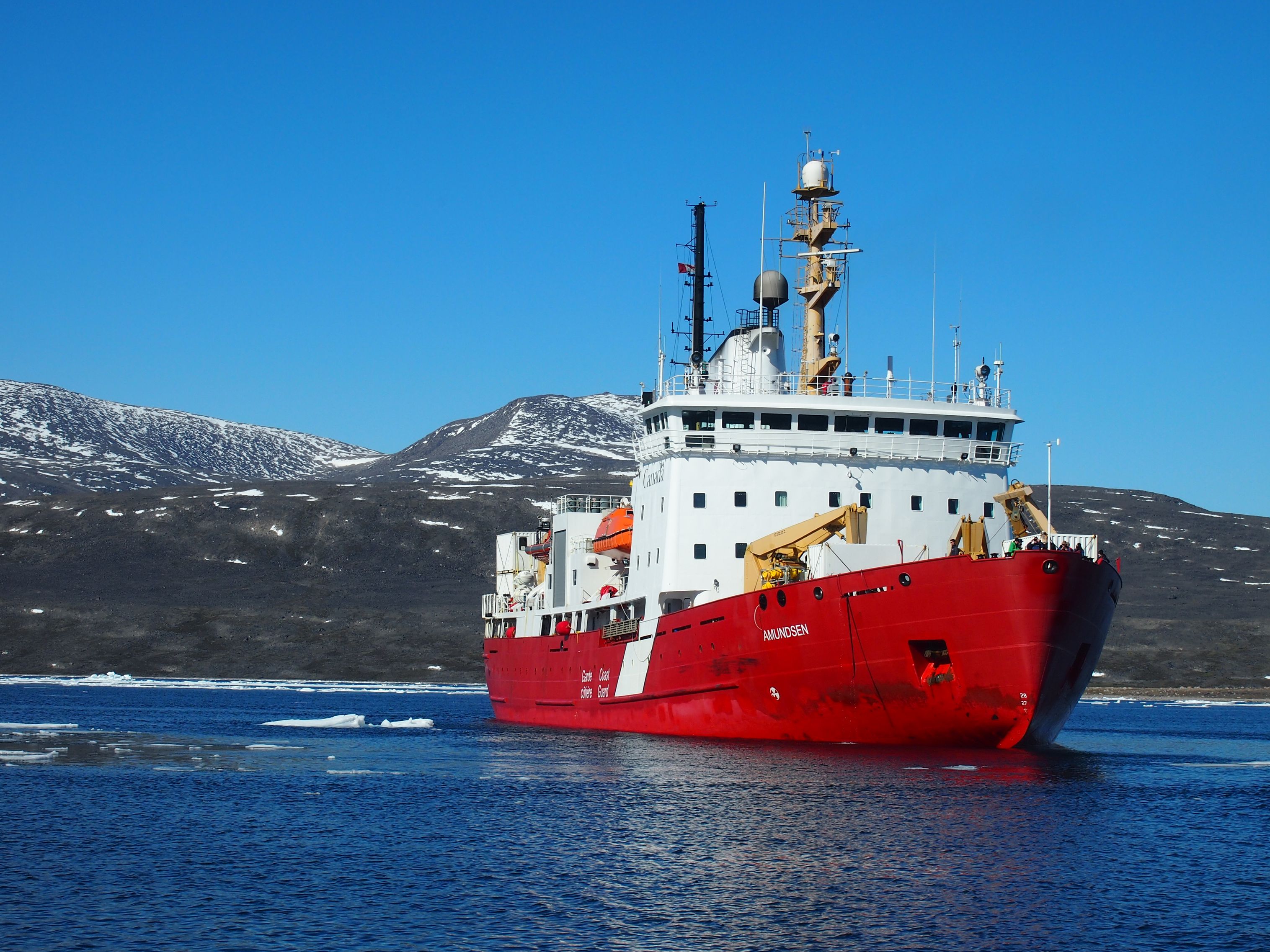
Photo: Ice breaker Amundsen (c)2018 - Claudie Marec, CNRS.
The TAKUVIK team, University of Laval Canada and CNRS France, recently returned from a fieldwork campaign in Baffin Bay, Greenland. Onboard the Canadian ice-breaker CCGS Amundsen, the team worked from 5-26 July 2019, gathering data to help better understand and monitor ice-edge phytoplankton blooms. The culture, health and economic capacity of northern communities is closely linked to marine resources supported by the phytoplankton spring bloom. This research aims to better understand biogeochemical cycles in the ocean around Baffin Bay, and the linkages between these cycles, natural food webs and human needs.
During this mission a series of Argo floats were deployed, which will remain in the sea for a year. Some of these floats are autonomous, used to record the ice edge spring and fall blooms. These floats will drift on the oceanic currents, taking profiles of the water column from the surface to the sea bed (up to 2,000 m). These floats use a series of sensors to detect and measure sea ice presence and thickness. Each float is equipped to measure: pressure, temperature, salinity, dissolved oxygen, nitrates, fluorescence-chla, fluorescence-CDOM, back scattering, radiometry (3 wavelenths) and photosynthetically available radiation.
These deployments are a part of a series of biogeochemical Argo float launches by Takuvik that have taken place every summer in Baffin Bay since 2016, originally within the scope of the GreenEdge project and now within the scope of INTAROS.
For more news about the INTAROS Summer Fieldwork Season 2019, stay tuned to our website and social media.
You can check out all the observing sites assessed by INTAROS in this interactive map.
01 August 2019